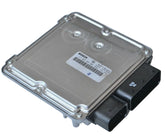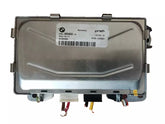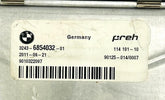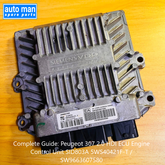Introduction
Modern vehicles rely heavily on their ECU (Engine Control Unit) to manage fuel injection, ignition timing, emission controls, and more. When your ECU malfunctions, your car’s performance suffers drastically. Normally, drivers rush to mechanics for diagnostics, but did you know you can detect ECU problems yourself with some basic knowledge and affordable tools?
In this guide, we’ll show you how to diagnose common car ECU problems without a mechanic—saving time and money while helping you make informed decisions about repairs or replacements.
1. What is an ECU and Why is it Important?
The ECU acts as the car’s computer brain, controlling communication between sensors and engine components. Without it, your vehicle cannot function efficiently. A failing ECU often mimics other mechanical issues, which is why accurate diagnosis is crucial.
2. Early Warning Signs of ECU Problems
Before diving into diagnostics, here are common symptoms that point to ECU trouble:
-
Check Engine Light (CEL) stays on without clear reason
-
Poor fuel economy even with normal driving
-
Engine misfires or stalls unexpectedly
-
Difficulty starting the car or no start at all
-
Unresponsive throttle or sudden loss of power
-
Faulty dashboard readings (false error codes, dead gauges)
If you notice two or more of these symptoms, your ECU could be the culprit.
3. Tools You Need for DIY ECU Diagnostics
Diagnosing ECU issues doesn’t require an expensive workshop. Here’s what you’ll need:
-
OBD-II Scanner (affordable and easy to use)
-
Multimeter (for checking voltage and ground connections)
-
Laptop or Smartphone App (to read live sensor data)
-
Basic Tool Kit (screwdrivers, wrenches, etc.)
4. Step-by-Step Guide to Diagnose ECU Problems
4.1 Run an OBD-II Scan
-
Plug in the OBD-II scanner under your dashboard.
-
Read the error codes and cross-check them with your car’s service manual or online database.
-
Look out for codes like P0600–P0610, which directly relate to ECU malfunctions.
4.2 Inspect Wiring and Connectors
-
Open the ECU housing (usually near the passenger side footwell or under the hood).
-
Check for burnt smells, loose connectors, or corroded wires.
-
Ensure all ground wires are securely attached.
4.3 Test ECU Voltage Supply
-
Use a multimeter to verify that your ECU is receiving proper voltage.
-
A weak or fluctuating supply can mimic ECU failure.
4.4 Check for Moisture or Water Damage
-
Water intrusion is a common reason ECUs fail.
-
Inspect the ECU casing for condensation, rust, or greenish corrosion.
4.5 Perform a Hard Reset
-
Disconnect your car battery for 15–30 minutes.
-
Reconnect and check if the error codes clear.
-
If problems persist, it may indicate deeper ECU failure.
5. When to Repair vs. Replace Your ECU
-
Repair ECU if: the issue is wiring-related, a blown capacitor, or minor software corruption.
-
Replace ECU if: the circuit board is burnt, water damage is extensive, or the ECU keeps failing after resets.
Tip: Always buy a genuine, compatible ECU replacement to avoid long-term problems.
At Automan Spare Parts, we stock a wide range of tested and genuine ECUs for different car brands—shipped worldwide with warranty.
6. Preventing Future ECU Problems
To extend your ECU’s lifespan:
-
Keep your car’s electrical system healthy (avoid jump-start surges).
-
Ensure proper grounding and clean wiring.
-
Keep the ECU dry and away from water leaks.
-
Perform regular OBD-II scans to catch issues early.
Conclusion
Diagnosing ECU problems without a mechanic is easier than most car owners think. With a basic OBD-II scanner, a multimeter, and careful inspection, you can spot signs of ECU failure before they become expensive repairs.
If your ECU is beyond repair, consider replacing it with a reliable, genuine unit. At Automan Spare Parts, we provide quality-tested ECUs at competitive prices, ensuring your car gets back on the road quickly.
Call to Action:
Looking for a replacement ECU? Browse our wide collection of genuine ECUs at www.automanspareparts.com and get fast worldwide shipping.







